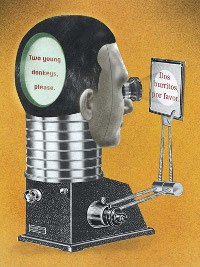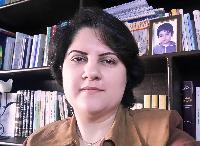| Páginas sobre el tema: [1 2] > | Poll: When translating a paragraph, how much do you read before starting to type its translation? Autor de la hebra: ProZ.com Staff
|
|---|
This forum topic is for the discussion of the poll question "When translating a paragraph, how much do you read before starting to type its translation?".
This poll was originally submitted by Noura Tawil. View the poll results »
| | | | neilmac
España
Local time: 15:42
español al inglés
+ ...
I skim/scan it, which more often than not (i.e. when the client and subject matter are well known) is little more than a cursory glance. It's not "reading" per se.
With a more unfamiliar text, I might spend a bit longer and look through it more thoroughly, mainly to make sure it's doable for me.
| | | | Noura Tawil 
Siria
Local time: 17:42
Miembro 2013
inglés al árabe
| When actually translating.. | Oct 5, 2013 |
The poll question is about the actual translating process, that's when you're done with translating one paragraph and you're moving to the next. It's AFTER you have already skimmed through the entire text and accepted the job.
| | | | Tatty 
Local time: 15:42
español al inglés
+ ...
I start translating the paragraph immediately. I do not stop to read it before I translate it. I translate a sentence, then I correct it. This is how I proceed. The further down the paragraph I get, the more I will need to look at earlier parts of the paragraph to correct the sentence I am working on.
I hope that makes sense.
| | |
|
|
|
| | Michael Harris 
Alemania
Local time: 15:42
Miembro 2006
alemán al inglés
| One complete sentence | Oct 5, 2013 |
as German swaps everything around, just like Afrikaans. And in some cases, a single sentence goes over several lines which also means that you have to cut it in English - fun and challenging:-)
| | | | Tim Drayton 
Chipre
Local time: 16:42
turco al inglés
+ ...
Most of the work I do is with legal and official texts the basic flow and logic of which I have become accustomed to. As such, I normally just dive in and start dissecting the first sentence of the paragraph into its logical/grammatical components and then reconstruct the text into the best possible English. After I have finished the first sentence, I move on to the second.
However, after I have translated a paragraph in this manner, I will then sit back a little, read the whole par... See more Most of the work I do is with legal and official texts the basic flow and logic of which I have become accustomed to. As such, I normally just dive in and start dissecting the first sentence of the paragraph into its logical/grammatical components and then reconstruct the text into the best possible English. After I have finished the first sentence, I move on to the second.
However, after I have translated a paragraph in this manner, I will then sit back a little, read the whole paragraph to see how it flows, and check anything that jars against the original text and keep revising and amending the translation until I am convinced that the result is a good, coherent piece of English writing, while remaining faithful to the source text.
To me, the optimum working method involves spending a little time in the evening scanning the text that I expect to translate the next day so that I can sleep on it. Regrettably, a great deal of the work that I receive needs to be turned round in a short space of time, and I often only have the chance to take a brief glance at it before starting work in the manner described above. ▲ Collapse
| | | |
on what I am translating. If it is technical I tend to read and translate each sentence one by one. But I also translate press articles on politics, economic affairs, society, the environment, science, culture, etc., and for these I tend to read the whole paragraph to sense the tone before starting to translate it...
| | |
|
|
|
It depends on the translation.
I usually read one complete sentence, but I sometimes need to read the entire paragraph or more than one paragraph.
| | | | | One complete sentence | Oct 5, 2013 |
This is a good question, by the way!
Many translators read ahead, but I don't do that any more. I have found that it's largely a waste a time because it usually doesn't show what the challenges are going to be in the actual translation process. So now I work straight through, one sentence at a time, and let the tale unfold as I go along.
| | | |
I had an extremely bad habit of starting to translate a sentence without even reading it until the end (in the hope that it would be quicker), but it only resulted in a lot of typing and retyping. Now I make sure I read at least one full sentence.
| | | | Tim Drayton 
Chipre
Local time: 16:42
turco al inglés
+ ...
| Main verbs in SOV languages | Oct 5, 2013 |
Julian Holmes wrote:
Because that's where the verb is located in Japanese. You don't know if the sentence is negative or positive until you get to the end. So, it's almost difficult to start translating immediately unless the sentence is really short. 
Also, Japanese often leaves out the subject and there is no singular or plural case. So, if you like riddles, this is the language for you. 
In translating from another SOV language (Turkish), I find that there is one very useful cardinal rule which is that the final word in the sentence will invariably - unless the register is very colloquial - be the main verb. As you say, if the sentence is short, the meaning just jumps off the page. Otherwise, I tend to go straight to the end of the sentence, safe in the knowledge that this will be the main verb and that the information as to whether it is positive/negative or active/passive will be here, then identify the other components of the main clause and all of the subordinate clauses in terms of the way that they relate to the main verb. I would describe this as being deconstruction rather than reading. I find that this is the fastest way to work with texts containing long sentences (and the main body of a Turkish court judgement often consists of only 5-10 sentences, even if it fills three or more pages).
| | |
|
|
|
| Really surprising results. | Oct 5, 2013 |
How can you translate anything at all, if you only read a few words from the paragraph before translating it. I would think you really should read the whole page, in most scenarios, and then read the particular paragraph again, and only then the sentence. Once you understand everything, and you have checked a few terms you are not sure about, or you need a better alternatives for, you start translating the sentence,or a cluster of sentences. One sentence sometimes does not translate into one s... See more How can you translate anything at all, if you only read a few words from the paragraph before translating it. I would think you really should read the whole page, in most scenarios, and then read the particular paragraph again, and only then the sentence. Once you understand everything, and you have checked a few terms you are not sure about, or you need a better alternatives for, you start translating the sentence,or a cluster of sentences. One sentence sometimes does not translate into one sentence. Two, or more sentences, may become one. It all depends, on the language, on the context, the type of writing. This approach it totally wrong in my opinion (translating separate phrases, and then gluing them together). ▲ Collapse
| | | | Tatty 
Local time: 15:42
español al inglés
+ ...
| Balance is key | Oct 5, 2013 |
When we translate one sentence at a time, we tend to take a more linguistic approach to translation. I find this way I am not influenced by what the text says later on. This way it unfolds, as Muriel pointed out. The major advantages of using a linguistic approach is that you can translate for hours on end firstly, and secondly and more importantly, I can balance my sentences well, which is so essential for a translation to read well. Don't forget that after editing our sentences, we proofread o... See more When we translate one sentence at a time, we tend to take a more linguistic approach to translation. I find this way I am not influenced by what the text says later on. This way it unfolds, as Muriel pointed out. The major advantages of using a linguistic approach is that you can translate for hours on end firstly, and secondly and more importantly, I can balance my sentences well, which is so essential for a translation to read well. Don't forget that after editing our sentences, we proofread our translations too.
P.S. Time is usually of the essence, and pre-reading texts is a waste of time in my experience.
[Editado a las 2013-10-05 11:06 GMT] ▲ Collapse
| | | | Mario Chavez (X) 
Local time: 09:42
inglés al español
+ ...
| The power of anticipation | Oct 5, 2013 |
Do you know why you like music or a specific music genre? Because your brain can anticipate the tempo, the rhythm, the flow. Same thing with your ability to speak a language, and the subsequent skills to write it.
Even with the most technical stuff, I seldom need to even scan the paragraph or read more than the first sentence. As I read the first linked words, I'm already translating and I'm already writing it down.
The one exception: when the original is poorly constru... See more Do you know why you like music or a specific music genre? Because your brain can anticipate the tempo, the rhythm, the flow. Same thing with your ability to speak a language, and the subsequent skills to write it.
Even with the most technical stuff, I seldom need to even scan the paragraph or read more than the first sentence. As I read the first linked words, I'm already translating and I'm already writing it down.
The one exception: when the original is poorly constructed. Substandard syntax or grammar forces me to do a conventional full reading of the sentence or paragraph. ▲ Collapse
| | | | | Páginas sobre el tema: [1 2] > | To report site rules violations or get help, contact a site moderator: You can also contact site staff by submitting a support request » Poll: When translating a paragraph, how much do you read before starting to type its translation? | Protemos translation business management system | Create your account in minutes, and start working! 3-month trial for agencies, and free for freelancers!
The system lets you keep client/vendor database, with contacts and rates, manage projects and assign jobs to vendors, issue invoices, track payments, store and manage project files, generate business reports on turnover profit per client/manager etc.
More info » |
| | Trados Business Manager Lite | Create customer quotes and invoices from within Trados Studio
Trados Business Manager Lite helps to simplify and speed up some of the daily tasks, such as invoicing and reporting, associated with running your freelance translation business.
More info » |
|
| | | | X Sign in to your ProZ.com account... | | | | | |







 ...
... 






